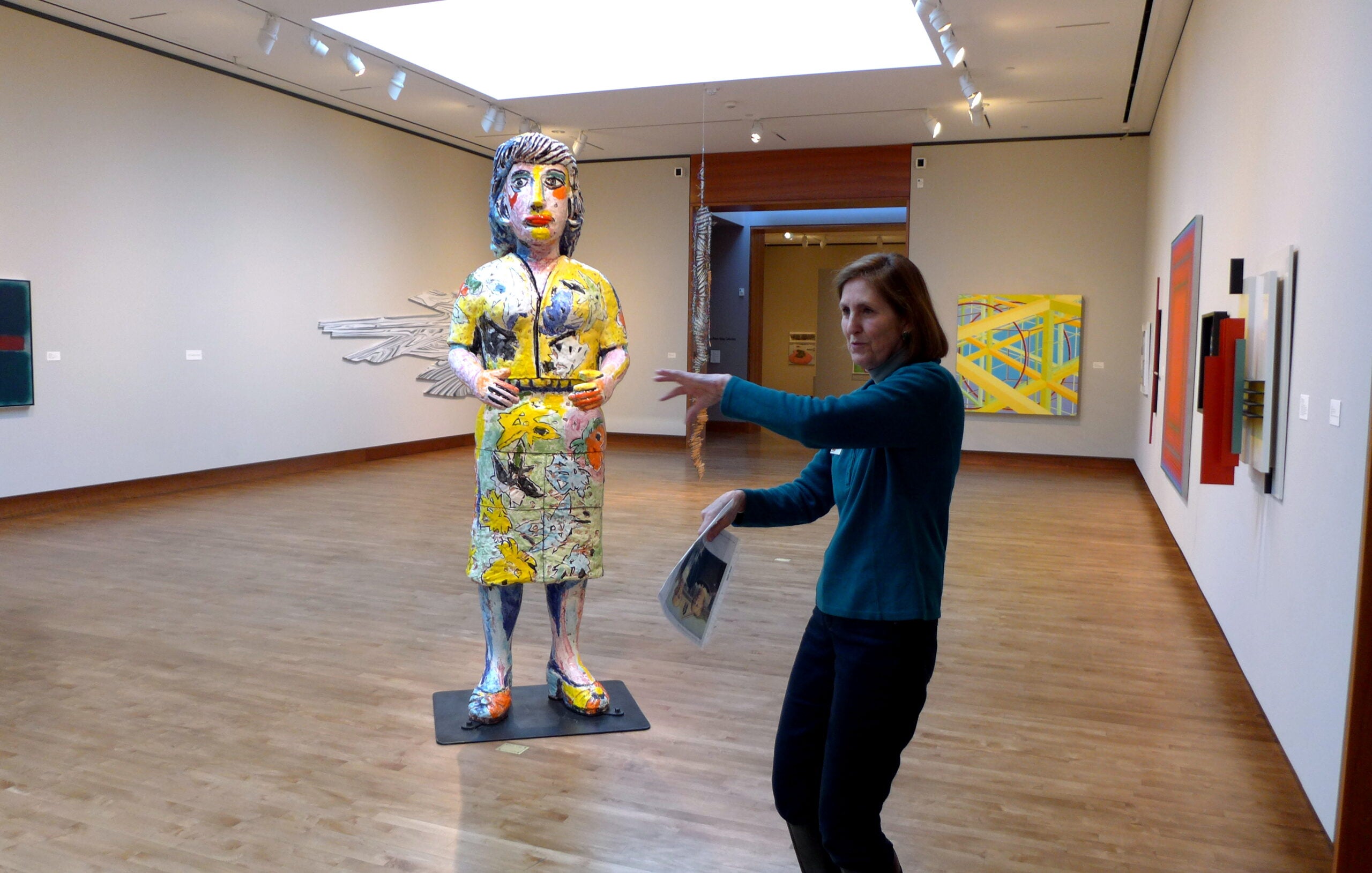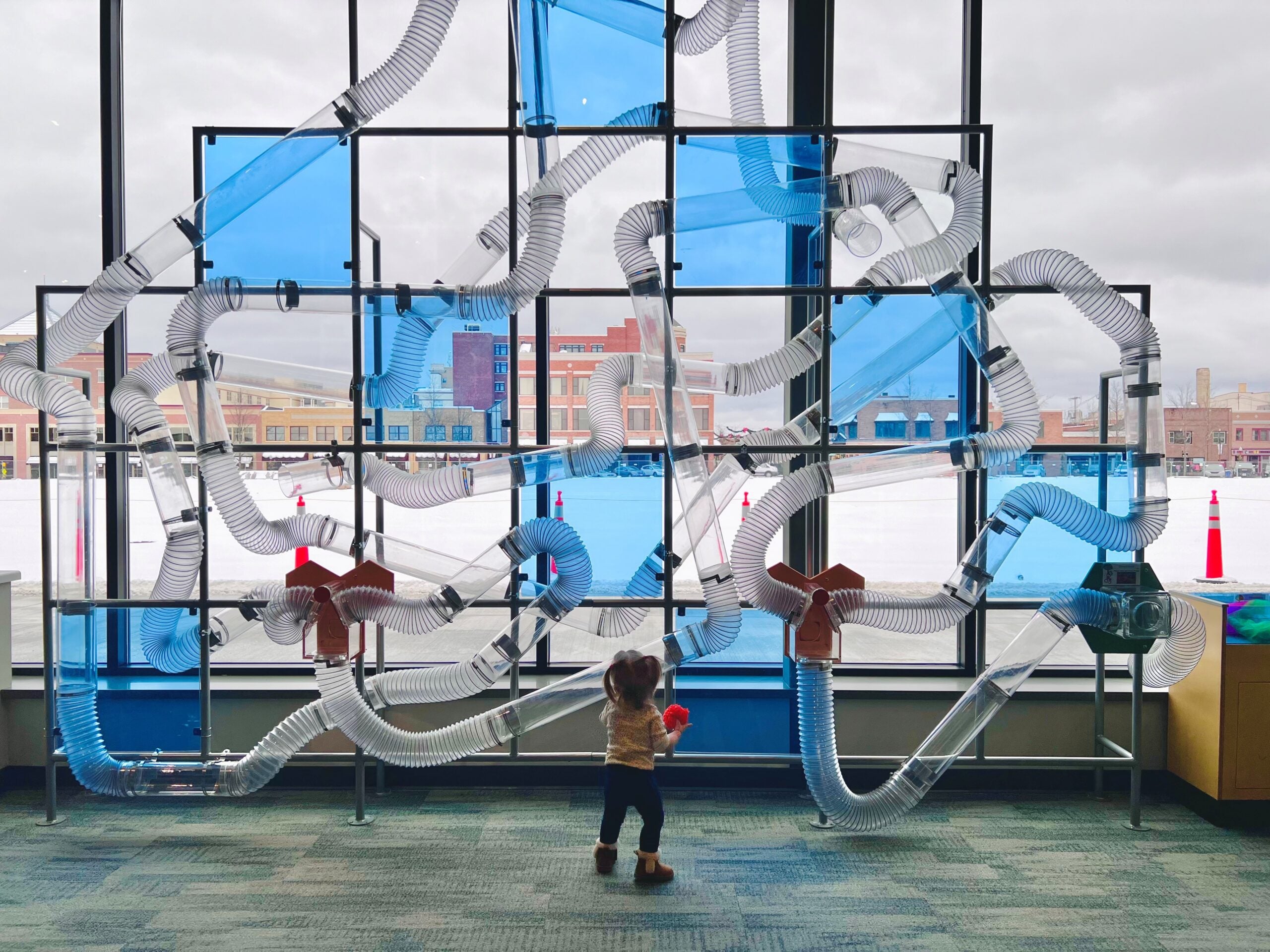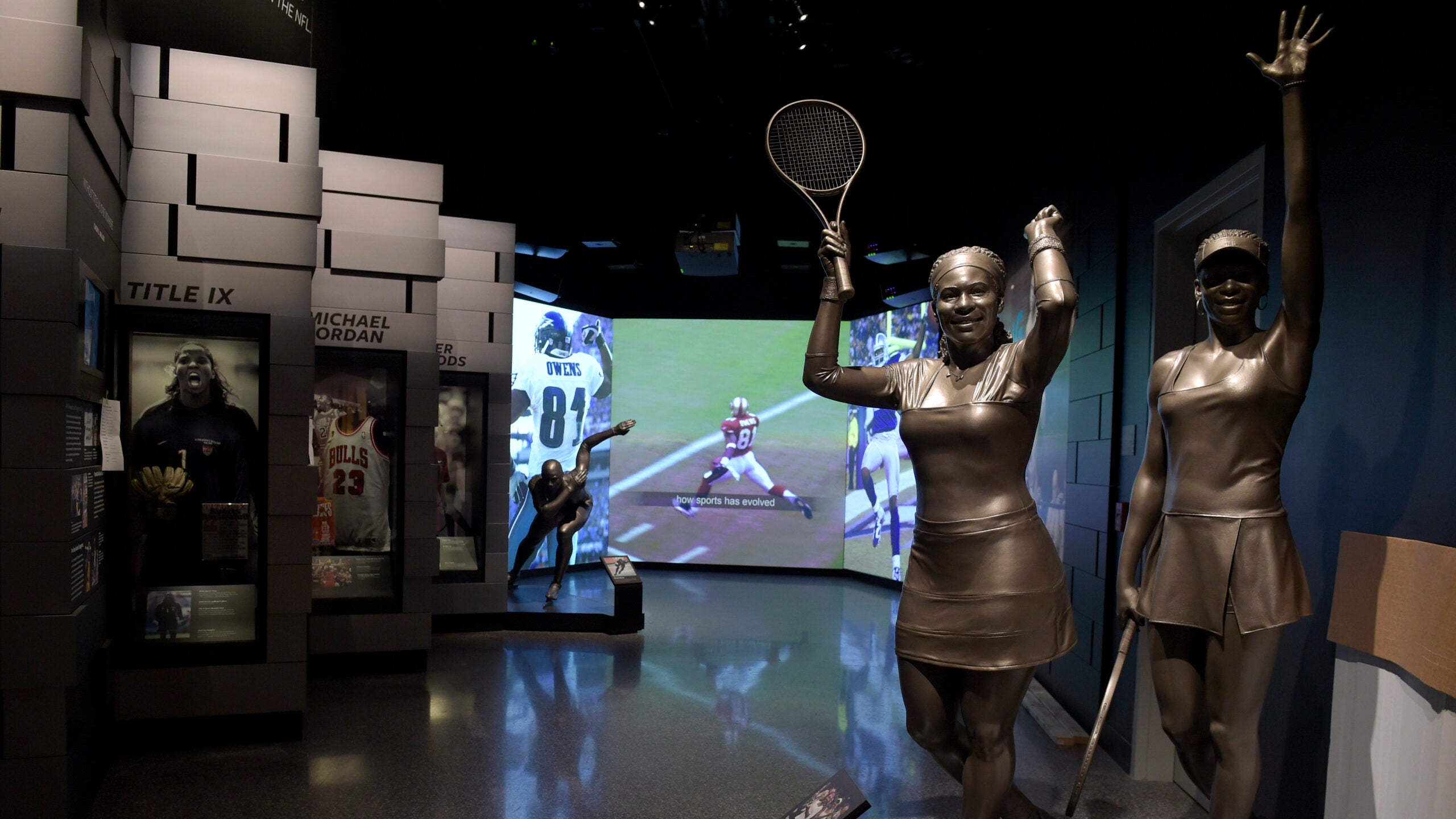Visit the Chazen Museum of Art in Madison on a workday during the off-season, and it’s possible to experience culture without the crowds. The only sounds are footsteps on marble as docents and visitors walk from gallery to gallery.
Before visitors can look at the art, there are warning signs at the entrance: no food, no drink. It’s also against the rules to bring in backpacks. Cameras are OK, with one caveat — they can’t be on a stick.
Taking “selfies” on smartphones has become a major trend this decade, and for many, holding their arm out to take a shot isn’t enough. Increasingly, people are buying devices called “selfie sticks” to mount their phone on. However, museums like the Chazen have begun prohibiting the device.
Stay informed on the latest news
Sign up for WPR’s email newsletter.

A man using a selfie stick in London. Chris Beckett (CC-BY-NC-ND)

The Windhover Hall in the Milwaukee Art Museum. Jim Bauer (CC-BY-ND)
Russell Panczenko, the director of the Chazen, hasn’t seen selfie sticks at his museum. However, he said did see them during a trip to Rome, where tourists snapped them up from street vendors.
“They were selling these things and I said, ‘What on Earth is it?’ I finally figured out. And this was the hottest selling item, and everybody was taking pictures of themselves,” he said.
A visitor to the Chazen named Sabina Badola said she isn’t against selfies. But as for selfie sticks in museums, that’s another matter.
“I just think its ridiculous that people have gone as far as to have a selfie stick to take a picture of something rather than enjoying the moment,” she said.
As Kristen Settle from the Milwaukee Art Museum explains, the bans on selfie sticks are for the safety of both art and visitors.
“People can get poked with them. They can get hit with them. Oftentimes when you have something like that, you may not realize where it’s going or where you are pointing it, or it swings around and knocks into something,” she said.
Settle said the Milwaukee Art Museum does allow cameras and smartphones without a flash.
“So we have people taking selfies all day long, and that applies across generations. It’s not just young people who are doing it. It’s a multi-generational trend that has really caught on,” said Settle.
She said the most popular place for selfies is Windhover Hall, the entrance to the Quadracci Pavilion. It’s a postmodern interpretation of a Gothic Cathedral, complete with flying buttresses and pointed arches.
Another popular draw is the glass art of Dale Chihuly.
“Very ornate and beautiful glass structures — I think probably the most famous one is the ceiling inside the lobby of the Bellagio hotel in Las Vegas,” said Settle. “We have a huge towering structure of his that he actually created for the Milwaukee Art Museum”
At the Betty Brinn Children’s Museum in Milwaukee, smartphones are allowed but not encouraged, according to Chief Advancement Officer Kristen Adams.
“If we see a caregiver perhaps sitting and maybe they’re engrossed with their smartphone, we try to engage them and reconnect them with that child, encouraging them to get up and be part of that experience. Luckily we don’t see that too often,” said Adams.
These museums contacted for this story seem to have the same love-hate relationship with this technology that the broader world has. The consensus is: It may be a great way to share photos and information but it can also be intrusive.
Also, all the museums all said that visitors haven’t been showing up with selfie sticks yet. “They haven’t been a concern at the Milwaukee Art Museum as of yet,” said Kristen Settle. “However, when tourist season picks up in the summer, we may see more of that happening.”
As for Russell Panczenko at the Chazen Museum in Madison, he still hasn’t used his selfie stick he bought overseas — as a matter of fact, it didn’t work. He said he plans on buying another, but probably won’t take it into a museum.
Wisconsin Public Radio, © Copyright 2024, Board of Regents of the University of Wisconsin System and Wisconsin Educational Communications Board.





